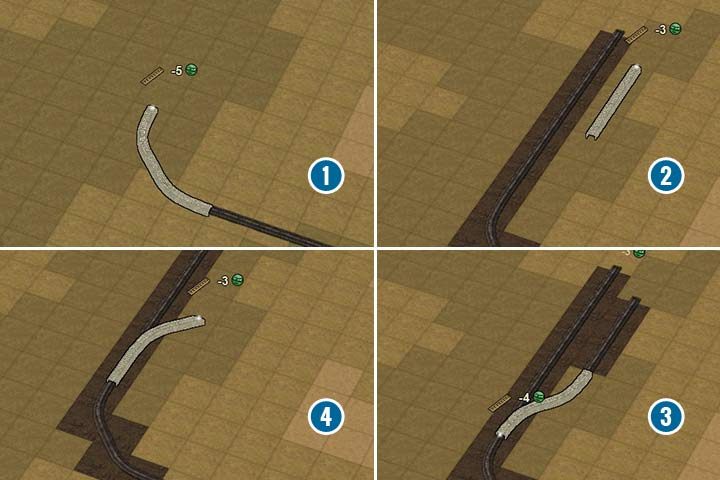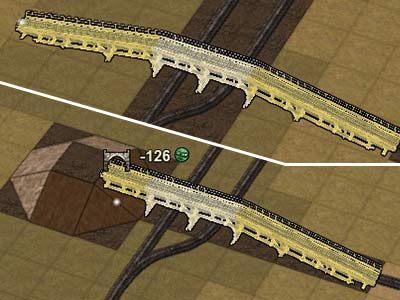Mashinky: How to construct railroads?
Last update:
Construction of railroads in Mashinky is based on fields system. Each section must connect to two edges of the field. You are limited by strong terrain unevenness - the tracks can be only placed on "brown" slopes. Before constructing make sure you have much free space. The railroads require much space, especially if you plan more complex tracks. In order to start the construction, select the Railway button. You can choose the button at the bottom or in the middle of the screen or you can press the "E" key. Now simply drag the track from one point to another. The building interface usually creates the best possible turns for the connection. The game tends to create as short tracks as possible. Remember that turns in the game are rather large. A minimum 90 degrees turn requires 3 horizontal and three vertical fields (1).

It's similar with connecting two parallel lines. Creation of such connection requires three fields as well. You should plan expansions of such places earlier, so that you can avoid problems with expansion or modifications. If you want to create an additional parallel line, first you should set a simple road (2) and then combine two sections (3). Otherwise you will have to face troublesome building interface (4).

The same goes to bridge constructing if you start from a flat surface. First three fields of the bridge will go up and the last three will go down. The rest are the actual bridge, which means that you need more than 6 fields in total for a bridge. You can also start from a higher ground. Then you won't have to add a raising or dropping part of the bridge. The bridges are rather long, so think it over if you really need one. Maybe you can postpone constructing it for later?

Once you start building the crossroads, remember to create all possible connections. This will enable you to avoid trouble with trains that might get lost or use weird paths. Sometimes it is best to zoom in the screen and carefully observe a crossroad to notice mistakes in the design.
- Mashinky Game Guide
- Mashinky: Game Guide
- Mashinky: Building and management
- Mashinky: How to construct railroads?
- Mashinky: How to effectively build stations?
- Mashinky: Simple connections and stations
- Mashinky: Station upgrades
- Mashinky: How do the semaphores work?
- Mashinky: Plant and factory upgrades
- Mashinky: Advanced connections and stations
- Mashinky: Transshipment stations
- Mashinky: Bridges or tunnels
- Mashinky: Building and management
- Mashinky: Game Guide
You are not permitted to copy any image, text or info from this page. This site is not associated with and/or endorsed by the developers and the publishers. All logos and images are copyrighted by their respective owners.
Copyright © 2000 - 2025 Webedia Polska SA for gamepressure.com, unofficial game guides, walkthroughs, secrets, game tips, maps & strategies for top games.
